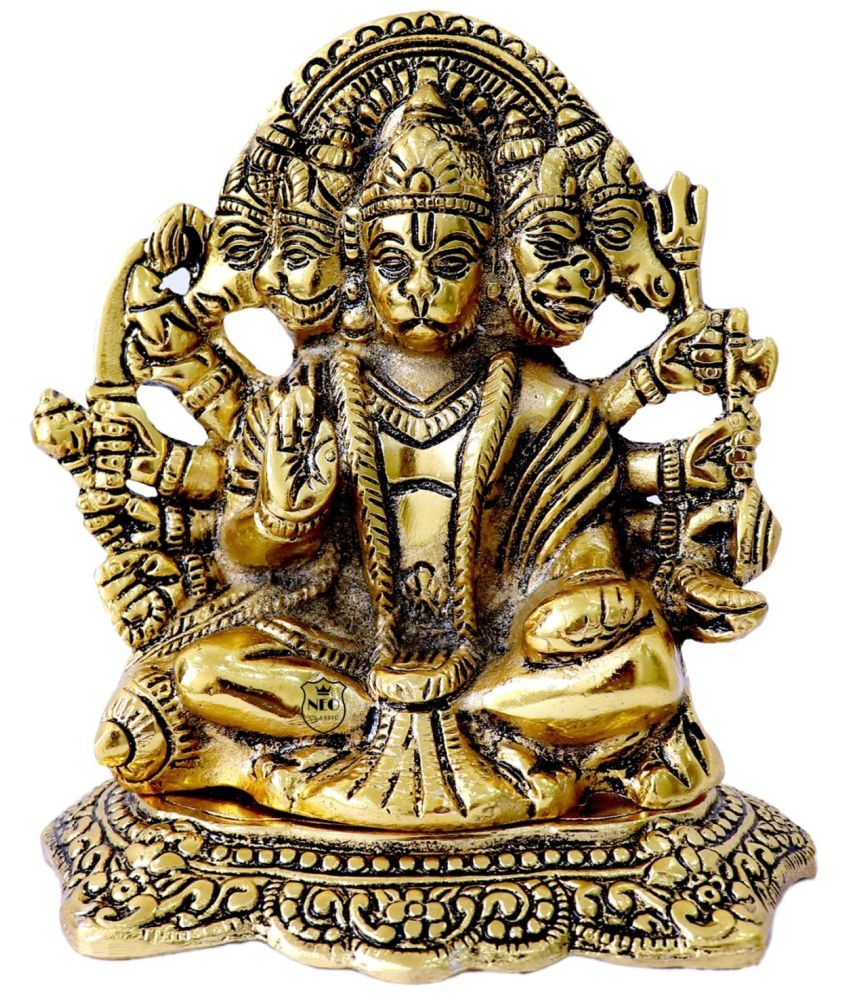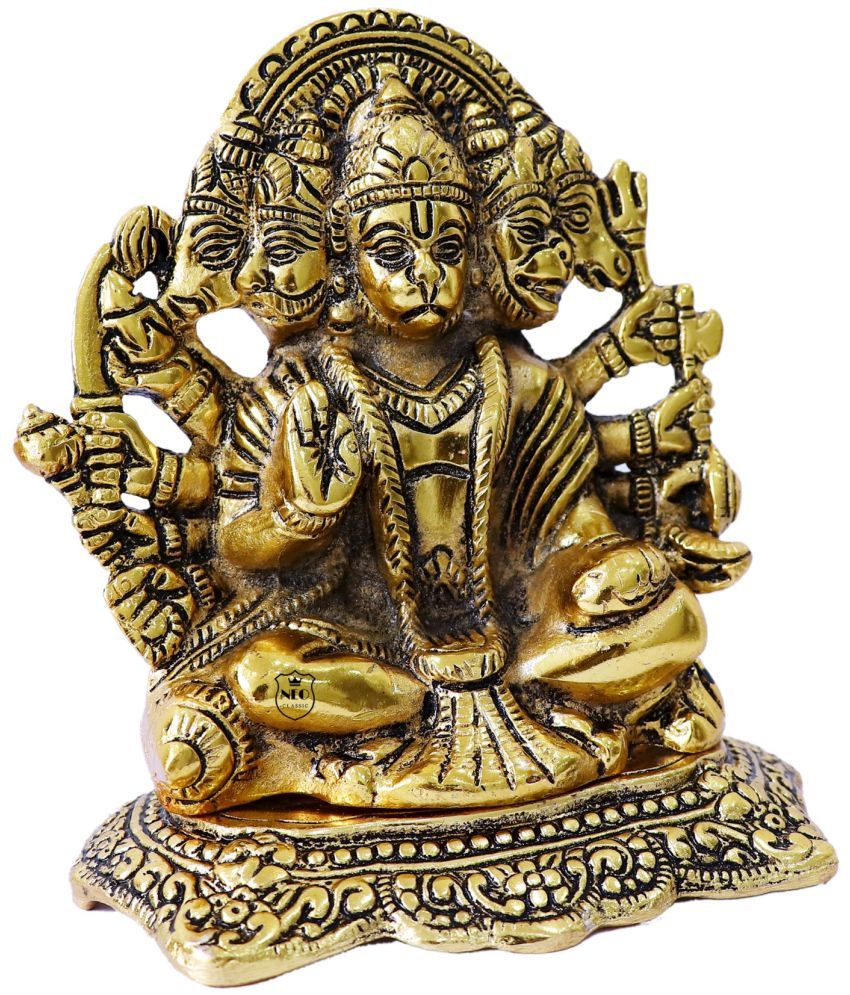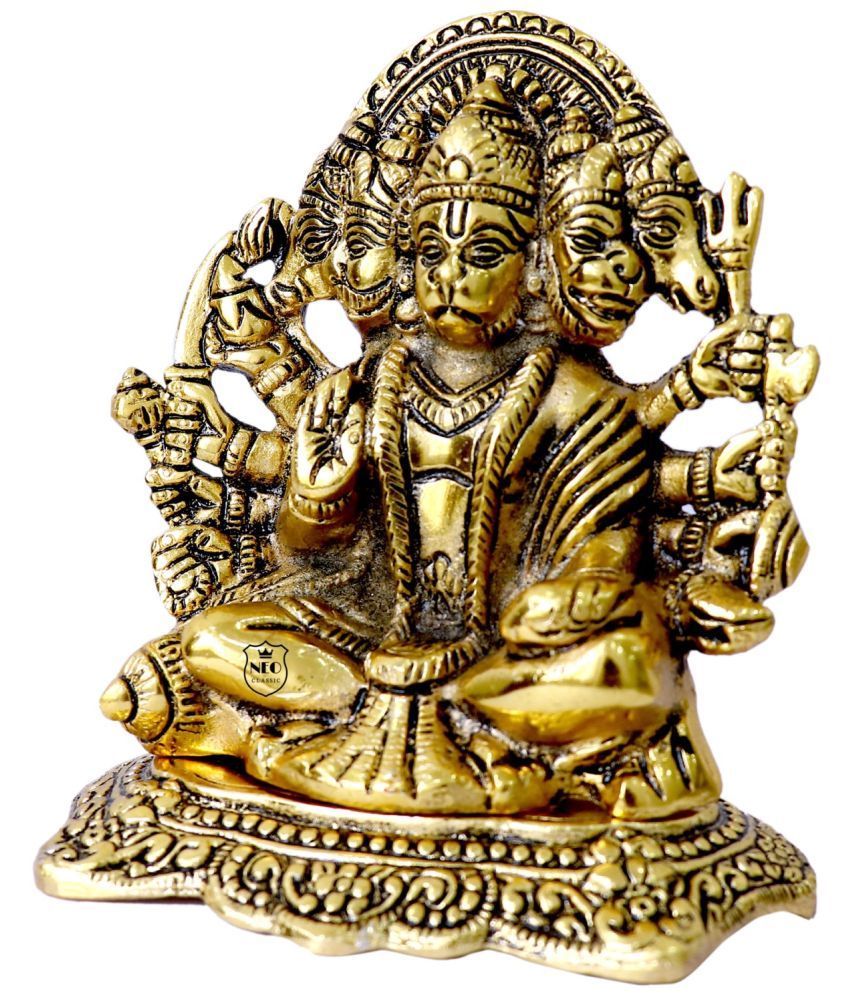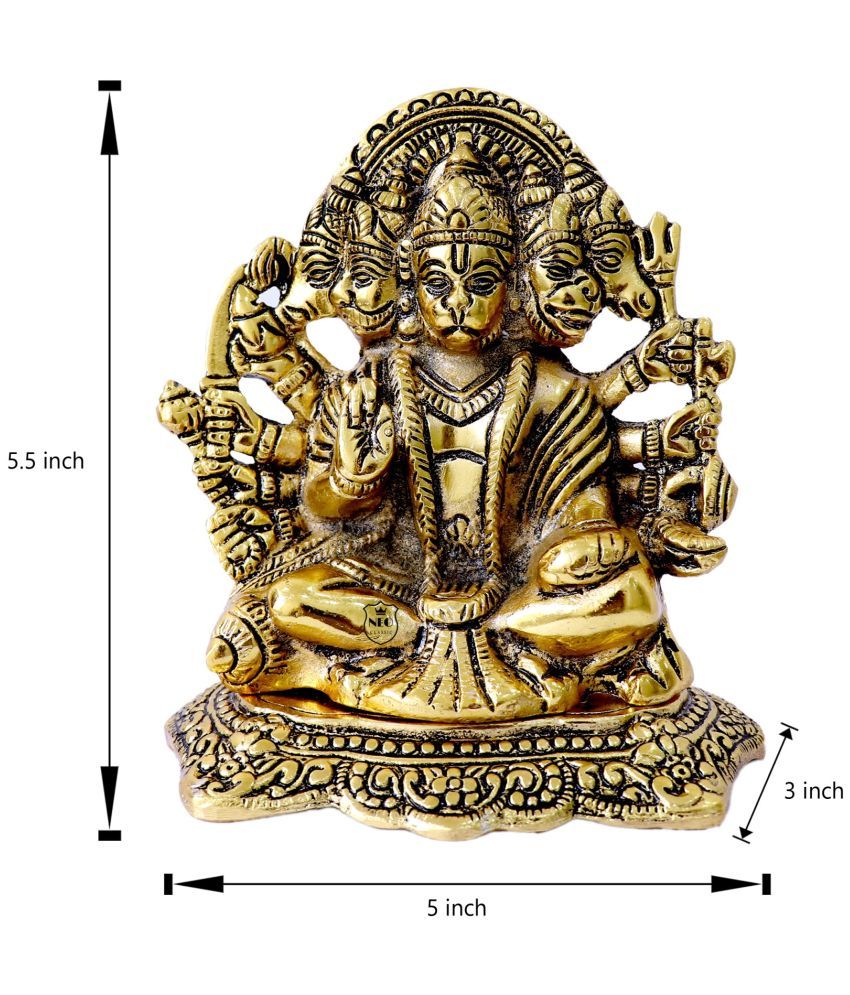Panchmukhi Hanuman in a sitting posture is a distinctive and significant representation in Hindu iconography. In this depiction, Hanuman is seated, often in a meditative or relaxed posture, which symbolizes his control over physical and mental energies. Here’s what typically characterizes this form:
Seated Posture: Hanuman is shown sitting in a calm, composed posture, which signifies stability, peace, and a deep connection with spiritual energy.
Five Faces: As with other forms of Panchmukhi Hanuman, this depiction features the five faces, each with its unique attributes and symbolism:
Hanuman’s Own Face: Represents devotion and the core qualities of Hanuman.
Lion Face (Simha): Symbolizes strength and courage.
Horse Face (Ashva): Signifies wisdom and intellect.
Boar Face (Varaha): Denotes protection and stability.
Demon Face (Narasimha): Represents the power to overcome evil and negative forces.
Attributes: In a seated posture, the attributes held by Panchmukhi Hanuman might include:
Mace (Gada): A symbol of power and authority.
Club (Koda): Sometimes included to signify strength.
Other Symbolic Items: Various other items may be present depending on the specific tradition or temple.
Purpose: This form of Panchmukhi Hanuman is often worshipped for spiritual strength, mental peace, and protection against various adversities. The sitting posture emphasizes a grounded and balanced approach to these challenges.
Artistic Details: The artistic representation can vary, but common features include a serene expression, a well-composed stance, and the presence of symbolic items that reflect his divine attributes.
Devotees might find this form particularly comforting and inspiring, as it combines the dynamic power of Hanuman with a sense of calm and stability.






